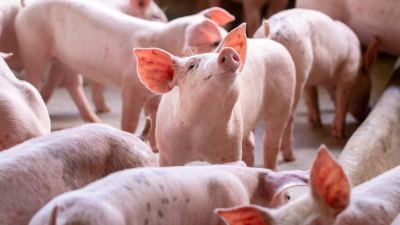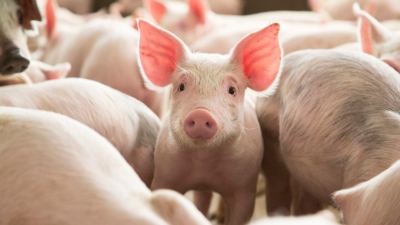Trace mineral supplementation strategies for optimized poultry production

Trace minerals such as copper (Cu), iron (Fe), manganese (Mn), zinc (Zn) and selenium (Se) are essential for growth, development and health. They participate in many metabolic pathways and physiological functions, including reproduction, growth, immunity, bone formation and energy metabolism (Dieck et al., 2003; Bao et al., 2007; Dibner et al., 2007).
For the most part, recommendations for supplementing these essential nutrients have been based on Nutrient Requirements of Poultry, issued by the National Research Council (NRC). This has been a valuable tool to the global poultry industry. However, with the latest edition published now more than 20 years ago, it is out of date in regard to levels and types of mineral supplementation. The high inclusion rates that it recommends, typically utilizing inorganic trace mineral sources including sulfates, oxides and hydroxy-type products, were intended as a safety net to avoid deficiency symptoms, due to the low bioavailability typically associated with inorganic sources (Vieira et al., 2020). In fact, many producers are even overshooting the NRC recommendations, supplementing inorganic minerals at two to ten times the suggested levels (Aksu et al., 2010).
However, advances in research, genetics and production systems in the intervening decades have shed new light on this topic. According to Applegate and Angel (2014), our perception of nutrient supplementation has shifted from simply preventing deficiency to a larger purpose of optimizing growth or egg production response per unit of nutrient intake.
And we now know that we can achieve these higher goals with lower inclusion rates, as long as we are choosing optimal forms of the supplements we feed. Aksu et al. (2010) reported that antagonisms of dietary inorganic trace minerals not only result in decreased absorption but, at the high inclusion rates commonly used today, they can also result in higher excretion in manure. For this and other reasons, supplementation at these high levels is detrimental to the environment. This realization is increasingly reflected in industry regulations; for example, inclusion rates of Cu and Zn in monogastric diets are now regulated by many EU and Asian countries.
All of this emphasizes the need to consider alternative strategies when it comes to trace mineral supplementation.
Several studies suggest that organic, or chelated, forms of trace minerals are more bioavailable than their inorganic counterparts. Thus, when provided in the organic form, concentrations of trace minerals such as Cu, Fe, Zn and Mn can be reduced while achieving the same, or even better, effects on growth and performance as the recommended doses of their inorganic forms (Brennan et al., 2013).
The question is, how much lower can we go when supplementing with organic trace minerals?
Organic trace minerals
The term “organic trace mineral” refers to any metal ion that is bound, complexed or chelated to a carbon-containing molecule, an organic ligand. However, the Association of American Feed Control Officials (AAFCO) points out that, based on the production process and the type of ligand used, organic trace minerals can be further classified into more specific categories.
Just as there are fundamental differences between inorganic and organic sources, there can also be significant differences between types within the organic category. This indicates the need for product-specific research as well as product-specific recommendations, since the degree to which the organic ligands remain bound to the metals under physiological conditions can differ from product to product, even within the same product category or classification.
The difference in stability and rate of disassociation, or separation, can also potentially explain the varying supplementation strategies proposed by the multiple companies that produce the different trace mineral products.
Even though partial replacement strategies (typically, replacing a certain amount of inorganic trace minerals with an equal or lower amount of organic trace minerals) are currently more popular, mostly due to cost, there is growing interest in total replacement strategies such as the Total Replacement Technology (TRT™) proposed by Alltech. These strategies involve the complete replacement of inorganic forms with organic ones at lower levels. In the case of TRT, these organic trace minerals are provided via Alltech’s Bioplex® and Sel-Plex® nutritional technologies.
Recommendations for organic vs. inorganic trace minerals
The fourth edition of the Brazilian Tables for Poultry and Swine, issued in 2017 by the Federal University of Viçosa in Brazil, recognized that with growing knowledge of the benefits of organic trace mineral sources, and with the growing commercial availability of new supplements, nutritionists increasingly have the option to choose between organic and inorganic supplementation.
The 2017 Brazilian tables, in fact, feature separate sets of recommendations based on mineral form. Based on these recommendations, supplementation with organic sources can be done at much lower levels (50–70% lower) than with inorganic sources.
This approach has also been validated by several university studies. Vieira et al. (2020) evaluated the effects of organic vs. inorganic trace minerals in diets fed to 1-day-old male broiler chicks. Two sources of supplemental trace minerals (inorganic and organic, with Bioplex metal proteinates as the organic source) at four levels of supplementation (12.5%, 25%, 37.5% or 50%), plus a positive control containing inorganic trace minerals at 100% of recommended levels according to Brazilian industry standards, were used in the diets.
The authors reported the following findings:
- Broilers fed organic forms had better feed conversion (FCR) throughout the trial (1.754 organic vs. 1.783 inorganic; P<0.05), improved livability (95.8% organic vs. 93.6% inorganic; P<0.05) and higher weight gain at 48 days (3.941 kg organic vs. 3.881 kg inorganic; P<0.05).
- At lower dietary inclusion levels (12.5% and 25%), the birds fed organic trace minerals had a four-point improvement in FCR (P<0.05).
- The lower levels of organic trace minerals in feed reduced the mineral concentrations of Zn, Cu and Mn in the feces and litter (P<0.05).
Also, in a recent meta-analysis, the authors analyzed over 32 studies to examine the impact of organic trace minerals (provided via Bioplex) on the production performance and egg quality attributes of laying hens. They reported that overall inclusion of organic trace minerals (Bioplex Cu, Mn, Zn and Fe) not only had a positive impact on performance and overall egg quality but also contributed to a lower carbon footprint, improving the overall sustainability of egg production.
The impact of nutrition on performance of breeders in terms of body weight profile, egg production, egg size and shell quality, mortality, fertility and hatchability has also been well documented. Several studies have reported a positive impact when using organic trace minerals, even at lower levels, especially in regard to hatchability and chick quality.
Thus we see that utilizing a total replacement approach, even at very low levels of supplementation, can provide poultry producers with a cost-effective and sustainable approach that can maintain or even improve performance while reducing harmful trace mineral excretions.
Conclusion
The need for alternative, sustainable trace mineral strategies is becoming increasingly more urgent. Besides the inefficiency and potential environmental impact of oversupplying poultry diets with excessively high levels of inorganic trace minerals, the negative impact of these higher inclusion rates on other dietary ingredients, including enzymes and vitamins, cannot be overlooked.
Many studies and recommendations on partial or total replacement of inorganic trace minerals with highly bioavailable organic trace minerals are product-specific, reflecting that due to differences in stability and relative bioavailability, not all sources will perform equally. Still, as more producers explore, develop and adopt organic options around the world — especially where environmental concerns prevail — we are learning more about these variations and about the benefits of replacing inorganic trace minerals with their organic counterparts.
To learn more about Alltech’s organic trace minerals, please contact your local Alltech sales representative or email poultry@alltech.com.
References available upon request.
About the author:
Laurentia van Rensburg is the global head of commercial (nutrition), Technology Group at Alltech. Prior to this role, she was the technical mineral manager for the Alltech Mineral Management platform. Laurentia has more than 15 years of experience in the livestock and animal science industries and has served in various roles in South Africa, the Netherlands, Latin America and North America.
Originally from South Africa, Laurentia earned a master's degree in animal science from the University of Kentucky.
















